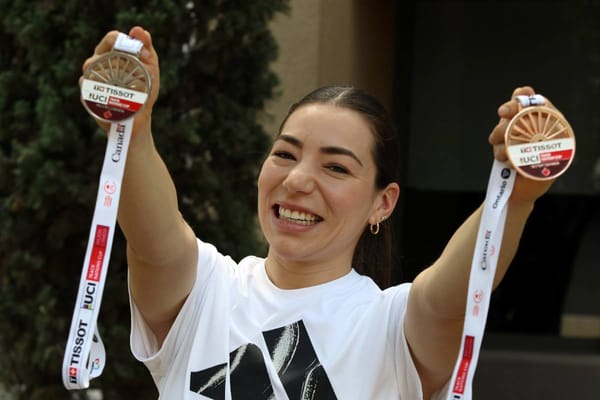How does digestion work in humans? Tell me what you eat and I'll tell you how you digest.
What is the digestive system? Digestion is important because the body needs nutrients from food and drink to function properly and stay healthy.

Edible foods for human beings are provided by the surrounding environment, and the diet of different social groups is strongly influenced by a set of customs, experiences, prejudices, religious beliefs, etc. The foods that we accept are those that our ancestors have consumed and that we have learned to consume in various forms, either cooked or raw. In the diverse human groups social, geographical, and even religious factors influence factors that prevent the consumption of some food, like beef in India. Not everyone has a great appetite for a dish prepared with snake or insect meat, despite its nutritional potential. As we can see, appetite is also conditioned by the society to which we belong and not only by physiological factors.
Our daily hunger
Our brain signals when the body requires food. If a certain nutrient is found in very low concentrations, the nervous circuit that regulates hunger will be turned on. Normally, blood glucose is the first indicator of our body's reserves; less than 5 grams of glucose would provoke a complex of sensations such as discomfort or pain in the pit of the stomach, secretion of saliva, etc.
Hunger is regulated by brain centers in the hypothalamus, where there is a region in charge of controlling appetite and satiety. The tongue contains the taste receptors and can only distinguish four fundamental ones: salty, sweet, bitter, and sour since in reality, it is the sense of smell that provides a great variety of flavors by mixing the smell of food with the perceived taste.
Olfactory, visual, auditory, mental, touch, and taste stimuli induce saliva production in the mouth. The salivary glands produce a liquid containing proteins (mucin), urea, uric acid, calcium, sodium, potassium, and enzymes (proteins with catalytic activity) such as amylase and maltase. The latter two are responsible for cutting the long chains of starch and the paired glucose molecules (disaccharides called maltose).
Saliva is secreted by three types of glands that produce mucous, serous, and watery secretions respectively, producing a volume of 1.5 liters of saliva per day. The tongue is responsible for mixing the food and forming the bolus.
The prelude to digestion
The food is moistened, crushed, and partly begins to be digested by the enzymes of the saliva. When cookies are chewed, the sweet taste is gradually perceived to increase because the starch they contain is tasteless, but when digested by amylase it releases sugars. The mucus of the saliva facilitates the lubrication of the food so that its passage does not irritate the walls of the esophagus. Saliva also has an oral cleansing function and helps to maintain the water balance, since when water reserves are low, very little saliva is produced, causing the individual to feel thirsty.
The food, when passing through the esophagus, is pushed by muscular contractions called peristaltic. Normally we do not notice this movement, however, when we reject some food it occurs with greater force causing retching that leads to vomiting.
The stomach has a volume of approximately 1.5 liters. Food gradually enters the stomach through the cardia sphincter (circular muscle), which controls its entrance. When the food arrives, various substances are secreted; the gastric glands produce the enzyme pepsin (a protein capable of degrading other proteins) while others secrete hydrochloric acid.
Chemical and enzymatic digestion
Hydrochloric acid is used for the chemical hydrolysis of food, but in addition, the acidity it causes activates the enzyme pepsin, which does not act under neutral conditions. The acidity is measured by the pH scale. The acidity of gastric juice also acts as an antiseptic and destroys most bacteria and cells. Mucus is secreted in the stomach to protect the stomach walls from autodigestion.
The pH scale
Acids dissociate in water and release ions (H+): the concentration of these ions indicates how strong or weak the acid is. To designate the acidity of a solution, the symbol pH is used: when there is no acidity, it is said to be neutral, having a pH=7; an acidic solution has a pH less than 7, and an alkaline solution has a pH greater than 7.
Hormones involved during digestion
The word hormone derives from a Greek verb meaning "to excite or remove". A hormone is a chemical messenger produced in small quantities. It travels through the blood to reach the organ in which stimulates a biochemical or physiological activity.
Gastrin is produced in the stomach and its function is to cause the gastric glands to secrete pepsin and hydrochloric acid.
Enterogastrin is produced in the small intestine and its function is to reduce stomach movement.
Secretin is produced in the small intestine and its function is to cause the pancreas to secrete bicarbonate.
Pancreozymin is produced in the small intestine and its function is to cause the pancreas to secrete digestive enzymes.
Cholecystokinin is produced in the small intestine and its function is to stimulate enzyme secretion and mobilize calcium from the bones.
Insulin is produced in the pancreas and its function is to transport glucose to the tissues.
Glucagon is produced in the pancreas and its function is to raise blood glucose levels.
The stomach contracts and mixes the food with the gastric juice and pushes it into the duodenum in the following order: carbohydrates, proteins, and fats. Another sphincter is responsible for the passage of food from the stomach to the intestine, the pylorus. When the food substances reach the small intestine, a hormone is produced that reduces the activity of the stomach and controls its movement so that the food is received gradually.
Meanwhile, a hormone acts in the pancreas to stimulate the secretion of bicarbonate (alkaline substance) which neutralizes the corrosive hydrochloric acid. Another hormone stimulates the production in the pancreas of enzymes that are secreted in the duodenum. As can be seen, hormones play a major role during digestion.
Digestion of sugars
There are different types of enzymes (all highly specific) that will be responsible for completely digesting food. For example, carbohydrates are digested by amylases, maltases, and lactases, enzymes that reduce polysaccharides and disaccharides to glucose, a sugar that can be absorbed through the intestine. However, not all carbohydrates are assimilated; cellulose, despite being so similar to starch, is not digestible for humans, because we do not have cellulose. Cellulose constitutes the fibrous part of vegetables and although it is not digestible, it is desirable for proper motility in the intestine.
Also, carnivorous animals lack enzymes that degrade carbohydrates, so it is illogical to try to feed them with vegetables that they cannot digest. Some herbivores can survive thanks to the symbiosis with some microorganisms that are part of their stomach or intestinal flora.
Digestive enzymes
Enzymes are proteins with special characteristics, they perform work in the modification of chemical compounds. The advantage is that they do this work faster and less energy is needed than with chemical compounds alone and physical factors such as temperature, movement, acidity, etc.
Carbohydrases:
Amylase digests starch.
Cellulase digests cellulose
B-galactosidase digests lactose.
Saccharase digests sucrose.
Maltase digests maltose.
Proteases:
Pepsin digests proteins (breaks down the amino acids tyrosine, tryptophan, and phenylalanine).
Trypsin breaks down the aa. lysine and arginine.
Chymotrypsin digests tyrosine, tryptophan, and phenylalanine.
Carboxypeptidase digests carboxyl end of a.a. chains.
Aminopeptidase digests aminoterminal ends of a.a. chains.
Lipases:
Pancreatic lipase digests fats or lipids.
Phospholipases digest phospholipids.
Occasionally, fewer digestive enzymes are produced with advancing age. In the case of lactose (milk sugar), some adults decrease the secretion of B-galactosidase (an enzyme that degrades lactose) and consequently, lactose reaches the colon where the intestinal flora ferments it producing carbon dioxide and irritating organic acids. The consequences of this deficiency are diarrhea and intestinal gas formation when milk is consumed. This discomfort is known as "milk intolerance".
Protein digestion
Protein digestion requires other proteins that act as enzymes: proteases. Pepsin, which acts in the stomach, belongs to this group and does not completely degrade proteins. Other proteases produced in the pancreas act in the intestine. The production of proteases in the pancreas is highly controlled. If the proteases were active, they would degrade the pancreatic cells and cause acute pancreatitis. For this reason, they are secreted in an inactive form; already in the duodenum, they are activated by other enzymes.
Some fibrous proteins, such as keratin, are only partially degraded. Vegetable proteins such as cereal grains are not completely digested due to the thick cellulose coating.
Bile vs. fats
As for the fats that we ingest with food, a hormone is released in the duodenum that causes the gallbladder to contract, which secretes bile. Bile is a thick, green saline solution made up of salts and pigments manufactured in the liver, including bilirubin, which we will discuss later. These substances are stored in the gallbladder. The main human bile salts are sodium glycolate and sodium taurocholate which are derived from cholic acid. Bile salts are constantly recycled between the intestine and the liver and their function will be to aid in the process of fat digestion.
Fat is insoluble in water, but the enzyme lipase, which can degrade fat, is not. For the two to interact there must be an emulsion of fat with water (so that lipase can degrade it). To help emulsify fats, bile salts act like detergents, i.e., they disperse them into small droplets as happens, for example, when oil and water are whipped together in the preparation of cosmetic creams. When an emulsion is formed, the small fat spheres (micelles), surrounded by water on the inside and outside, form a very thin layer that is easily degraded by lipase.
Pancreatic lipase is responsible for degrading fat into fatty acids. Bile salts are also essential for the absorption of fatty acids and are required for the efficient intestinal absorption of fat-soluble vitamins such as vitamins A, B, E, and K. Fatty acids do not pass into the blood capillaries but are absorbed by the lacteals (lymphatic vessels) of the lymphatic system.
Not everything that is absorbed nourishes
The end products of digestion (glucose, amino acids, and fatty acids) and dissolved substances tend to migrate or diffuse from a site of high concentration to one of low concentration. When the concentration of glucose is high in the intestine, it passes into the blood. In the blood, it normally maintains a concentration of 0.1 g per 100 ml, but all glucose is absorbed by the tissues thanks to active transport even if there is a high concentration of glucose inside the cells.
There are proteins that transport sugars or other substances into the cells, even if there is a higher concentration of these sugars inside the cell. Insulin is a hormone that stimulates the glucose transport proteins into the cells. When there is no good transport of glucose to the tissues or when not enough insulin is produced, glucose concentrates in the blood changing its fluidity and altering the fine physiological balance causing the disease called diabetes.
In the case of alcohol, it is only diffusion-dependent, absorbed, and distributed evenly throughout the body mass. Alcohol cannot be converted into useful glucose or glycogen for the body, so excessive consumption can lead to hypoglycemia (severe blood sugar depletion).
The blood with the nutrients passes directly through the portal vein to the liver, which distributes the nutrients to the body in the correct amounts. Excess glucose is stored in the liver in the form of glycogen (animal starch) and is mobilized in the form of glucose during prolonged fasting. The liver also exhibits detoxification activity of foreign compounds such as drugs, alcohol, food additives, preservatives, and others.
Excess and fat
Excess fatty acids are stored in adipose tissue, distributed throughout the body under the skin. This adipose tissue resembles in quantity the muscle present in the body and is not inactive. It maintains a constant exchange of fats between the liver, the heart, and the muscles. The fat reserve contains enough energy to survive for about three months. When excess carbohydrates are consumed, they can be converted to fatty acids and triglycerides to be stored in adipose tissue. The removal of fat from adipose tissue can be accelerated by the action of the hormone adrenaline.
Since this adipose tissue functions as an islet and as an energy reserve, it cannot be completely removed from the body. Animals that overwinter have specialized adipose tissue called brown fat, which specializes in producing heat. Fats have a fundamental role in the organism, they are not only fattening, nor are they as useful as it is thought. Fats serve to store metabolic energy, from their components cholesterol is manufactured, which is part of cell membranes and is the precursor of steroid hormones and bile salts.
At the end of the intestine
All indigestible matter passes into the large intestine where water absorption continues. This is inhabited by the intestinal flora that can proliferate when food has been poorly digested. These foods are fermented by this intestinal flora consisting of bacteria, such as lactic acid bacteria, which are not harmful to humans. Sometimes pathogenic bacteria lodge in this place, which, when proliferating and fermenting the food, produce gases that often inflame the abdomen and cause discomfort.
Bilirubin secreted into the bile originates from the degradation of hemoglobin when old red blood cells are eliminated. Bilirubin is a reddish-orange substance that is transported to the liver where it is secreted into the bile. In the large intestine, bacteria enzymatically modify bilirubin to urobilinogen, part of which is reabsorbed and sent to the kidneys where it is transformed into urobilin (yellow pigment) which is excreted in the urine. Urobilinogen is also converted by bacteria of the intestinal flora into stercobilin, a reddish-brown pigment that is excreted in the feces.
By Norma Angélica Oviedo de Anda




